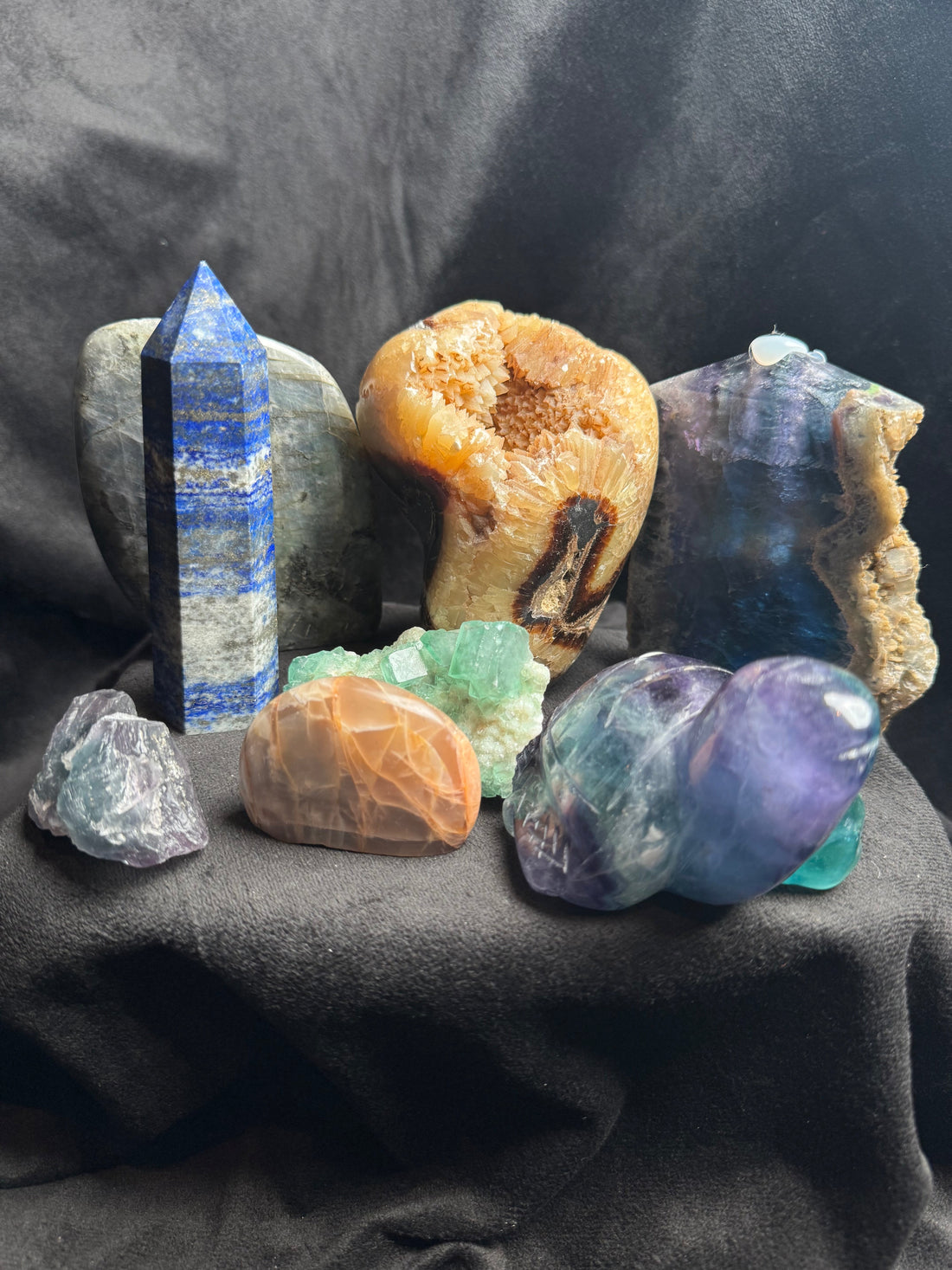
Where Do Crystals Come From? A Look at Crystal Origins Around the World
Share
Crystals aren’t just beautiful, they’re the result of millions of years of geological activity. Each crystal forms under specific conditions, deep underground or in hydrothermal pockets, and each region of the world produces unique types because of its environment, minerals, and heat levels.
Here’s a breakdown of where many well-known crystals come from and why those places matter.
1. Madagascar – Known for Vibrant Color and Variety
Madagascar is famous for producing colorful and high-quality stones like labradorite, rose quartz, carnelian, and celestite. The island has rich volcanic history and a complex underground structure, which makes it ideal for crystal formation. Many stones here are hand-mined by local communities.
Popular Crystals from Madagascar:
- Labradorite (known for strong flash)
- Rose quartz (often polished or in spheres)
- Ocean Jasper (only found here)
2. Brazil – One of the World’s Largest Crystal Sources
Brazil has been a powerhouse in the crystal world for decades. It has huge quartz deposits and is the main source for amethyst, citrine, and clear quartz. Massive geodes found in southern Brazil can weigh hundreds of pounds. The climate and volcanic activity in regions like Rio Grande do Sul create perfect growth conditions.
Popular Crystals from Brazil:
- Amethyst (deep purple and often cathedral-shaped)
- Citrine (including heat-treated varieties)
- Clear quartz and smoky quartz
3. Pakistan & Afghanistan – Bold Colors from High Mountains
The mountain ranges in these countries—especially the Hindu Kush and Karakoram—are rich in minerals. Crystals form inside cavities in the rocks and are often mined by hand in dangerous, high-altitude environments. These regions are known for aquamarine, tourmaline, and pink kunzite.
Popular Crystals from Pakistan & Afghanistan:
- Aquamarine (often large and clear)
- Green tourmaline
- Kunzite (light pink to lilac)
4. Mexico – Classic Minerals with Strong UV Reactions
Mexico is known for its deep-rooted mining history, especially in areas like Chihuahua and Durango. Fluorite and calcite from here are highly fluorescent, which makes them popular for collectors and UV enthusiasts.
Popular Crystals from Mexico:
- Fluorite (with red or purple UV glow)
- Calcite (some glow bright orange)
- Creedite and aragonite
5. United States – Diverse Local Finds
The U.S. offers a wide variety of crystals from different geological zones. Arkansas is known for clear quartz, while Arizona produces copper-based stones like chrysocolla and malachite. States like California and Colorado are also known for tourmaline, garnet, and beryl.
Popular Crystals from the U.S.:
- Quartz (especially from Arkansas)
- Malachite and azurite (from Arizona)
- Garnet and topaz (from western states)
Why Crystal Origin Matters
Knowing where your crystal came from helps you:
- Verify authenticity
- Understand how it formed
- Support ethical sourcing (some regions use responsible mining, others don’t)
For example, a hand-dug rose quartz from Madagascar has a different story than a mass-mined piece with unknown origin.
Final Thought
Every crystal has a birthplace—often shaped by pressure, heat, and time. When you know where your stone came from, you connect more deeply with it, and you become a more informed collector or buyer.
Want to know the origin of any piece in our shop? Just ask—we value transparency.
